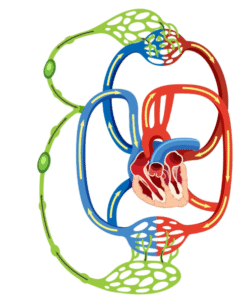Overview
Vitamin A deficiency is a nutritional disorder resulting from inadequate intake or absorption of vitamin A, which is essential for vision, immune function, and skin health. While severe deficiency is rare in Korea due to a generally balanced diet, mild deficiencies can still occur, particularly among children, pregnant women, and individuals with malabsorption disorders. Korean hospitals, including Seoul National University Hospital, Asan Medical Center, and Samsung Medical Center, provide diagnosis, supplementation therapy, and nutritional counseling for at-risk populations.
What is Vitamin A Deficiency?
Vitamin A deficiency occurs when the body does not have enough retinol or provitamin A carotenoids. Vitamin A is critical for maintaining healthy vision, skin integrity, immune response, and reproductive health. Deficiency can manifest as ocular symptoms, increased susceptibility to infections, and impaired growth in children.
Symptoms
- Night blindness (difficulty seeing in low light)
- Dry or rough skin
- Dry eyes or xerophthalmia
- Frequent infections, particularly respiratory or gastrointestinal
- Delayed growth and development in children
- Bitot’s spots (white spots on the eyes in severe cases)
- Poor wound healing
Causes
- Inadequate dietary intake of vitamin A-rich foods (e.g., liver, carrots, sweet potatoes)
- Malabsorption disorders such as celiac disease, Crohn’s disease, or pancreatic insufficiency
- Chronic liver disease impairing vitamin A storage
- Increased requirements during pregnancy, lactation, or rapid growth
- Rare genetic disorders affecting vitamin A metabolism
Risk Factors
- Infants and young children
- Pregnant and breastfeeding women
- Individuals with chronic gastrointestinal disorders
- People with poor dietary intake or limited access to vitamin A-rich foods
- Patients with liver disease
Complications
- Progressive vision loss and permanent blindness if untreated
- Increased susceptibility to infections
- Growth retardation in children
- Skin disorders and impaired epithelial function
- Reproductive complications in severe deficiency
Prevention
- Maintain a diet rich in vitamin A sources: carrots, spinach, sweet potatoes, liver, and dairy products
- Nutritional supplementation in at-risk groups under medical guidance
- Public health initiatives for maternal and child nutrition
- Early screening for malabsorption conditions and liver disease
- Routine pediatric check-ups to monitor growth and vision
Treatment Options in Korea
Treatment focuses on restoring adequate vitamin A levels and addressing underlying causes.
- Diagnosis
- Blood tests to measure serum retinol levels
- Ophthalmologic evaluation for night blindness or xerophthalmia
- Nutritional assessment to identify dietary insufficiency
- Evaluation for underlying malabsorption or liver disease
- Medical Treatments
- Oral or intramuscular vitamin A supplementation based on severity
- Diet modification to include vitamin A-rich foods
- Management of underlying malabsorption or liver disease
- Multivitamin supplementation for preventive care in at-risk populations
- Specialized Hospitals in Korea
- Seoul National University Hospital – Nutrition and metabolic disorders clinic
- Asan Medical Center – Pediatric and adult nutrition management
- Samsung Medical Center – Comprehensive treatment of vitamin deficiencies
- Local community health centers for preventive screening and supplementation
- Long-Term Follow-Up
- Periodic monitoring of serum vitamin A levels
- Vision assessments in children and adults
- Continued dietary counseling for prevention
- Management of any complications arising from prolonged deficiency













